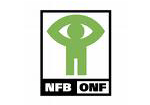PHP Generator for MySQL online Help
| Prev | Return to chapter overview | Next |
DateTime
Use this type of representation to display date and time in convenient format.

Date time format
Use the drop-down list to select a format to be applied to the column data or specify your own format manually. Find out more information about supported date and time formats at PHP manual.
Format |
Example |
Y-m-d |
2014-11-18 |
d.m.Y |
18.11.2014 |
d M Y |
18 Nov 2014 |
Y-m-d H:i:s |
2014-11-18 12:30:00 |
d.m.Y H:i:s |
18.11.2014 12:30:00 |
d M Y H:i:s |
18 Nov 2014 12:30:00 |
Align
Allows you to specify the alignment of the control. Possible values are Default, Left, Right, and Center.
Inline styles
Use this field to set formatting options to be used inside the style attribute of the element. For example, to set the font color and the background color for a control, place the following string to Inline styles:
color: red; background-color: yellow;
Custom attributes
This property allows you to add simple metadata to individual elements, largely for the purpose of providing information to make JavaScript functions easier. Such attributes can be later handled in client-side events. For example, to add several custom attributes to an editor, enter the following string into the Custom attributes edit box:
data-city="Boston" data-lang="js" data-food="Bacon"
It is recommended to prefix all custom attributes with data- to keep the result document compatible with the HTML5 requirements.
Null label
This property allows you to define how NULL values are represented for this column. By default the value of this property corresponds to the one defined at the project level. You can specify a custom value for a certain column (for example, "Not selected", "Not available" "Not supported", etc.) if necessary.
| Prev | Return to chapter overview | Next |





 Download
Download Buy
Buy
